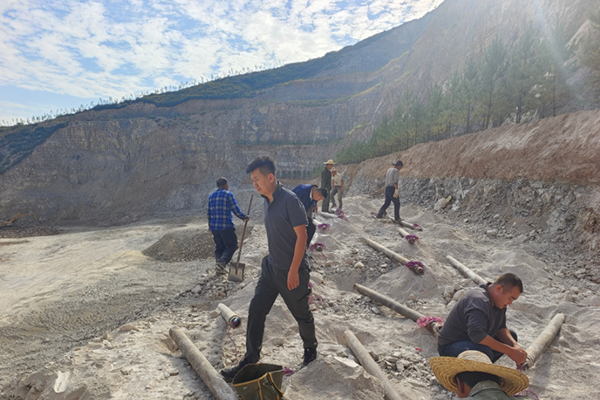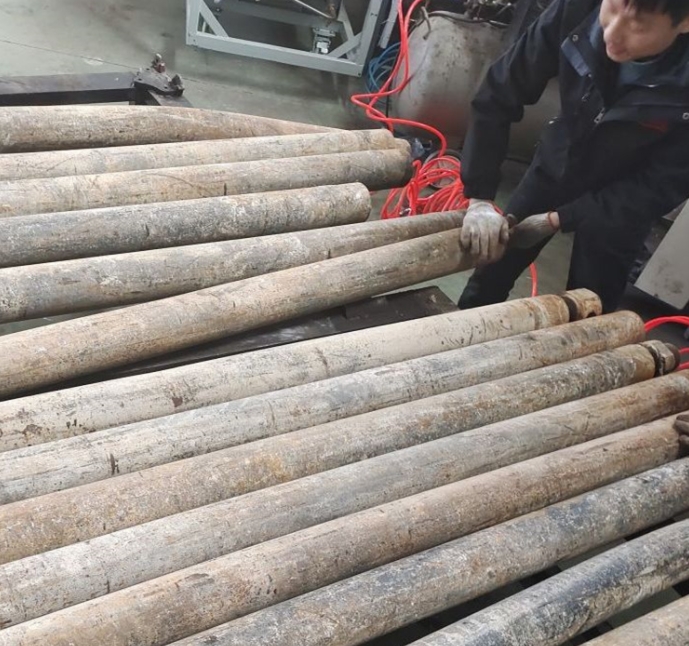How to reduce the impact of blasting on the surrounding environment? What are the methods for strengthening surrounding rock after blasting?
New technology: O2 rock demolition system
Link:
Control of blasting vibration Blasting vibration control is a necessary measure to ensure construction safety and reduce the impact on the surrounding environment. Here are some methods to control blasting vibration:
1. Blasting design optimization:
According to geological conditions and surrounding environment, reasonably design blasting schemes, including hole network parameters, charge amount, detonation sequence, etc. Use blasting methods with small blast-holes, multiple blast-holes, and less charge to reduce the energy of a single blast. 2. Millisecond delay blasting:
Using millisecond delay blasting technology, the blasting is divided into multiple stages, so that the blasting vibration is dispersed in time and the vibration intensity is reduced. 3. Pre-splitting blasting:
Pre-splitting blasting is carried out around the main blasting area to form a crack to reduce the vibration effect of the main blasting on the surrounding rocks. 4. Blasting vibration monitoring:
Real-time monitoring of blasting vibration is carried out, and blasting parameters are adjusted according to monitoring data. 5. Control of the maximum charge of a single section:
Limit the maximum charge of a single section blasting to control the amplitude of vibration. 6. Vibration isolation measures:
Set up vibration isolation trenches and vibration isolation walls between the blasting point and the protected object to reduce vibration propagation.Reduce the impact of blasting on the surrounding environment

1. Reasonably plan the blasting time:
Avoid residents' rest time to reduce the impact on the lives of surrounding residents. 2. Blasting direction control:
Adjust the blasting direction to avoid the blasting shock wave directly acting on sensitive buildings. 3. Covering and protection:
Cover the blasting area with sandbags, geotextiles and other materials to reduce flying stones and dust. 4. Noise control:
Use facilities such as soundproof walls and soundproof sheds to reduce the spread of blasting noise. 5. Environmental monitoring:
Monitor air quality, noise, vibration, etc., and take corresponding measures in time.Methods for strengthening surrounding rock after blasting
1. Spraying anchor support:
Speed concrete support is carried out on the surrounding rock after blasting, and anchor rods or anchor cables are added when necessary to improve the stability of the surrounding rock. 2. Steel arch support:
Install steel arches in unstable areas and use them in combination with shotcrete to form a strong support system. 3. Grouting reinforcement:
Grouting is performed on surrounding rocks with developed cracks to improve their integrity and strength. 4. Pipe shed or advance support:
Set up pipe sheds or advance anchors at the front of tunnel excavation to pre-reinforce the surrounding rock and reduce the damage to the surrounding rock caused by blasting. 5. Freezing method:
Under special geological conditions, such as soft soil or aquifers, the freezing method is used to reinforce the surrounding rock. 6. Surrounding rock stability monitoring:
Continuously monitor the reinforced surrounding rock to ensure the reinforcement effect and timely discover and deal with potential problems.
Through the above measures, blasting vibration can be effectively controlled, the impact on the surrounding environment can be reduced, and the stability of the surrounding rock after blasting can be ensured.





